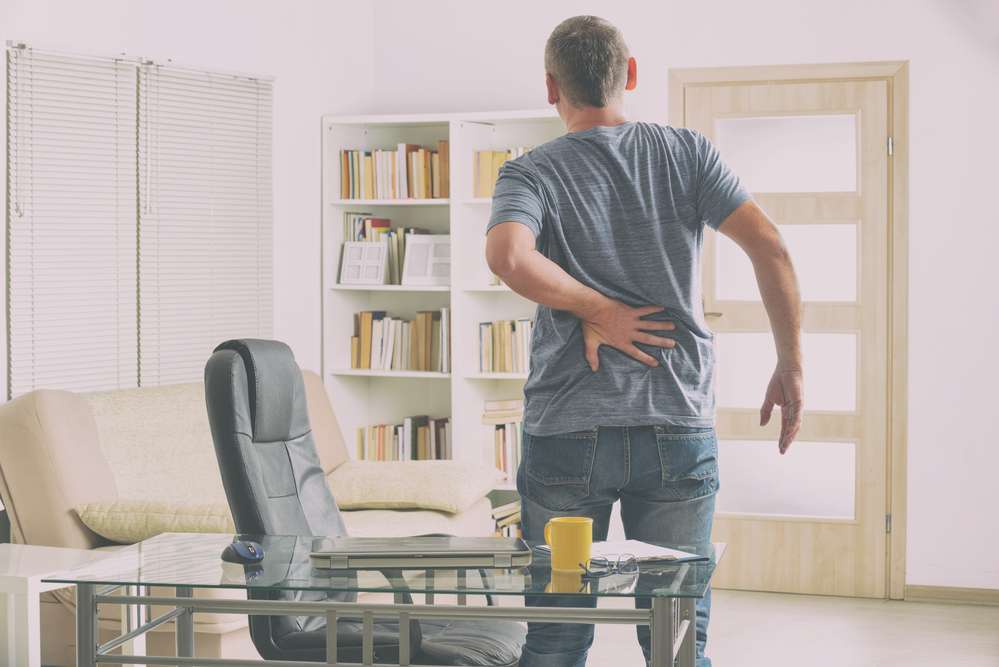“If I woke up in the morning and nothing hurt, I would think I was dead.” – Unknown
It is the stuff of jokes, humorous anecdotes, and light-hearted griping. Older people nod knowingly when their peers complain of an aching back and the imagery of waking up and responding to sore back muscles is a mainstay in movies and television.
In fact, lower back pain is the most common type of musculoskeletal pain experienced by adults, with 84 percent of people experiencing it at least some point in their lives, and 23 percent experiencing it on a chronic basis.
In short, suffering from lower back pain after a night’s sleep seems to be so common as to be unavoidable and inevitable.
Yet it is not and shouldn’t be.
Lower Back Pain and Body Dysfunction
In addition to waking up with back pain, many people find that lower back pain comes in other forms and by other causes.
From our posture when we stand to how we sit to how we walk, dysfunctional movement can easily lead to muscle and other soft tissue pain problems, particularly lower back pain.
As Time Ferriss of The 4-Hour Workweek fame has stated in relation to our gait,
“When you elevate the heels more so than you elevate the sole of the foot, you trigger a cascade of compensations in the knees and hips that cause tight hip flexors, and then those hip flexors cause lower-back pain.”
How we sleep and our lack of core strength can combine to create pain issues, as well.
Because experiencing lower back pain in the mornings is probably one of the most common pain issues that people share, the causes have been determined fairly well.
One source suggests the following,
- Bad Mattress: Firm bedding supports your spine better through the night, and well-worn, cratered mattresses may aggravate your back while you sleep.
- Poor Sleep Position: Sleeping on your stomach causes your lower back to extend, placing it under pressure.
- Poor Ergonomics: Bad posture? Work in a bad environment? Your ergonomics may take a toll on your back that worsens at night when you’re still.
And an article at Healthline notes that,
“Back pain is common. It’s also often felt first thing in the morning, particularly upon moving from lying down to standing. This pain is usually the result of stiffness from long periods of rest or decreased blood flow from sleeping. After moving around, symptoms usually subside.
While morning back pain can be periodic, some people experience it more often than others. This persistent pain can be caused by a number of issues, including stress, poor posture, or underlying medical conditions.”
Making the Pain Go Away – Eliminating Dysfunctions
Most health experts and spine specialists recommend having a firm mattress that is less than seven years old as well as sleeping on your back with a support under your knees, or on your side with a pillow between your knees.
Another cause can be pain that has been triggered during the day and is simply aggravated during the night from sleeping in one position or more for extended periods of time.
What many may suspect but not be able to determine easily is that a lack of core strength can lead to a scenario where any sleeping positions still result in various back pains upon waking, especially lower back pain.
One expert source has suggested that building the muscles in your core can improve your overall body structure, helping to reduce the back pain you are experiencing. The Sleep Foundation states that, with a stronger core, your body can use more of your abdominal muscles instead of your back, leading to less strain and injury throughout the day.
In fact, experts agree that regular exercise throughout the day is key to alleviating and preventing back pain. Walking is among the best exercises you can do, however, anything that gets you moving and on your feet can help keep your back strong.
You Can Find a Back Pain Relief Solution
Back pain, particularly recurring or chronic pain, can be far more than simply annoying. Seeing your quality of life diminish each day as you struggle to cope with nagging back pain can affect every area of daily existence.
Which is why we invite you to come and see us at Pain and Performance Solutions.
When you first come for your first visit, we’ll work with you to learn everything we can about your back pain, along with any other history of pain and discomfort. This is because for us to effectively treat your lower back pain we must first understand where and how your pain started. Then, once your verbal assessment and history are completed, we’ll conduct a full examination.
Together, these steps allow us to determine the best form of treatment to help you along your road to recovery.
Many times, as we experience pain our bodies try to compensate by making subtle adjustments in movement to minimize or avoid the pain. However, what happens then is that, as our bodies actually shift that pain to compensate for our discomfort, it can result in different areas of pain.
Finding chronic pain relief with therapies like Anatomy in Motion, or Aim, along with applying Active Release Techniques® can only begin after we understand where your pain started. That could mean it started previously with another injury you might have sustained.
Your trust in us and your honesty are keys to our success. Ultimately, the only way to achieve total pain relief and recovery is by getting your body healthy and working properly.
Don’t hesitate to reach out. We are here to help and answer any questions that you may have.
You can reach us at (707) 636-4404 or by filling out our online contact form.
